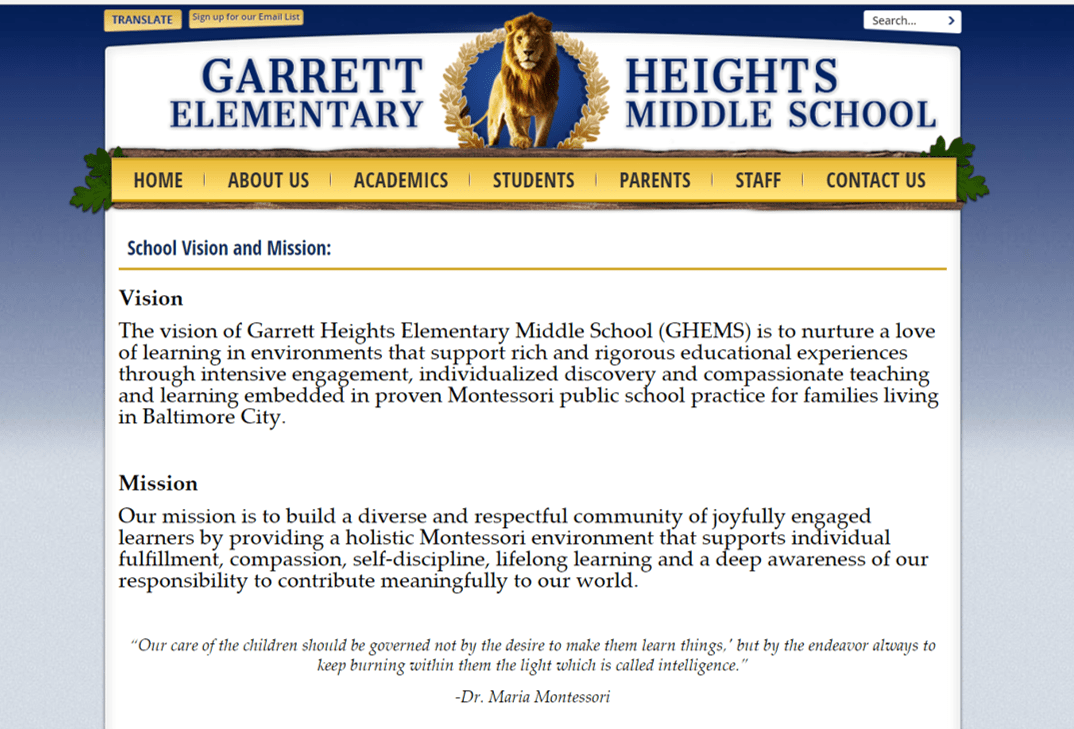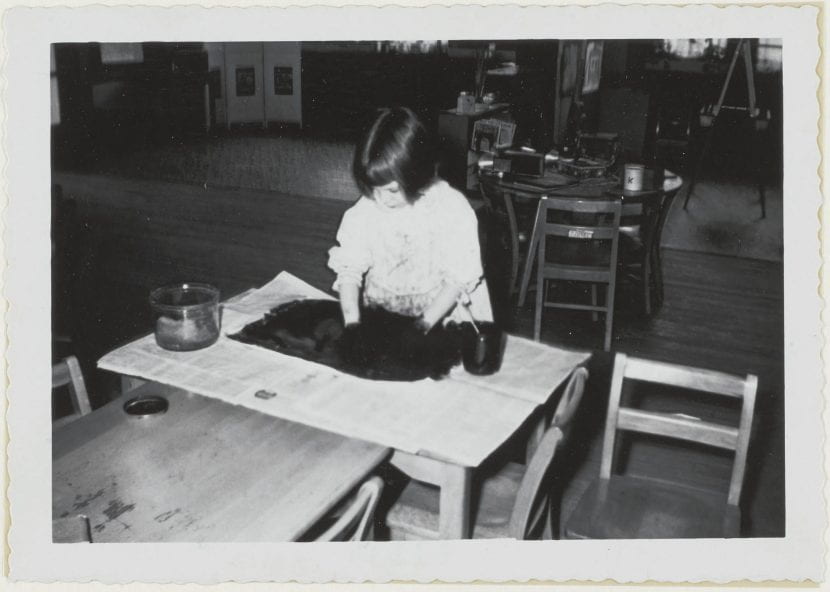On November 5th, 2017, we hosted a second reunion for students of the Lida Lee Tall School — the elementary school that had been part of Towson’s history since 1866. This blog post is a re-creation of a presentation shared by Felicity Knox at the reunion.
The hallmark of the student work done at the Lida Lee Tall school was what we often call “progressive education”. It had its heyday prior to WWII, and after the war, as schools began standardizing measurement techniques, it fell out of favor. However, even after WWII, the Lida Lee Tall School continued to explore just what progressive education meant for its students.
But first, a little context. Progressive education can mean many things, as demonstrated by these three leaders in education history:
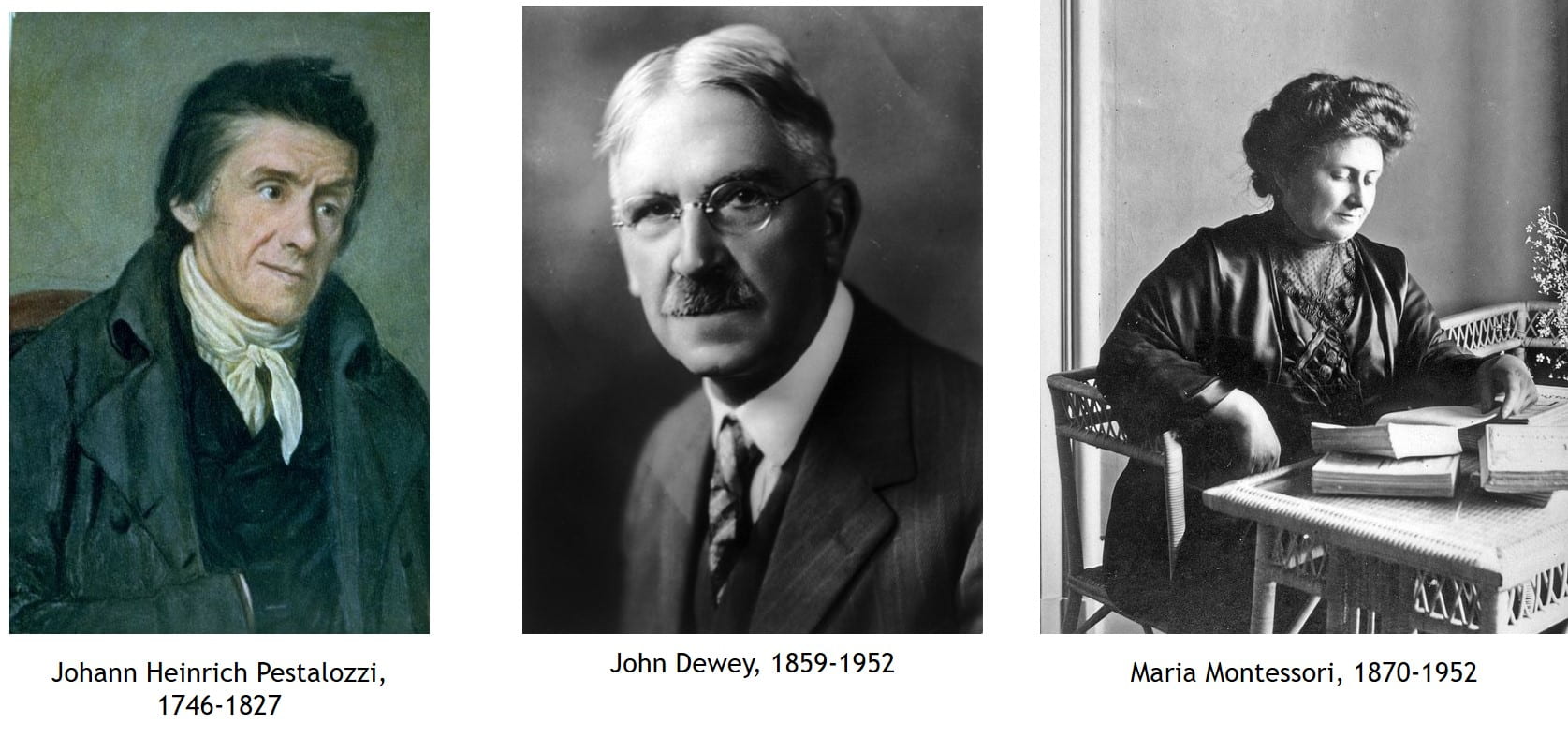
- Pestalozzi was a Swiss educator who believed in educating the whole child, the famous “Head, heart, and hands” theory of education. In order for society to flourish, its citizens must be educated not just intellectually, but emotionally, and with practical skills.
- Dewey, a philosopher and psychologist, believed that students learned better when actually doing work, rather than trying to learn by memorization and recitation. “Learning by doing” is his hallmark phrase.
- Montessori believed that educators must respect children’s’ abilities to learn through exploration. She also believed that children learn better by doing, as Dewey did, and that educators and parents should, essentially, set the stage for that learning to happen.

What did this mean in reality?
As you can see from these two photographs, the work done by students was very different. On the left, we see the traditional classroom with students seated at desks, listening to a lecture or perhaps reciting back what they’ve learned.
On the right is a classic example of progressive education. These classmates wanted to build a chicken house for chickens they were raising. And so they’re working together to create that. They’re learning by doing.
Here are some other terms people have used when talking about traditional and progressive education:
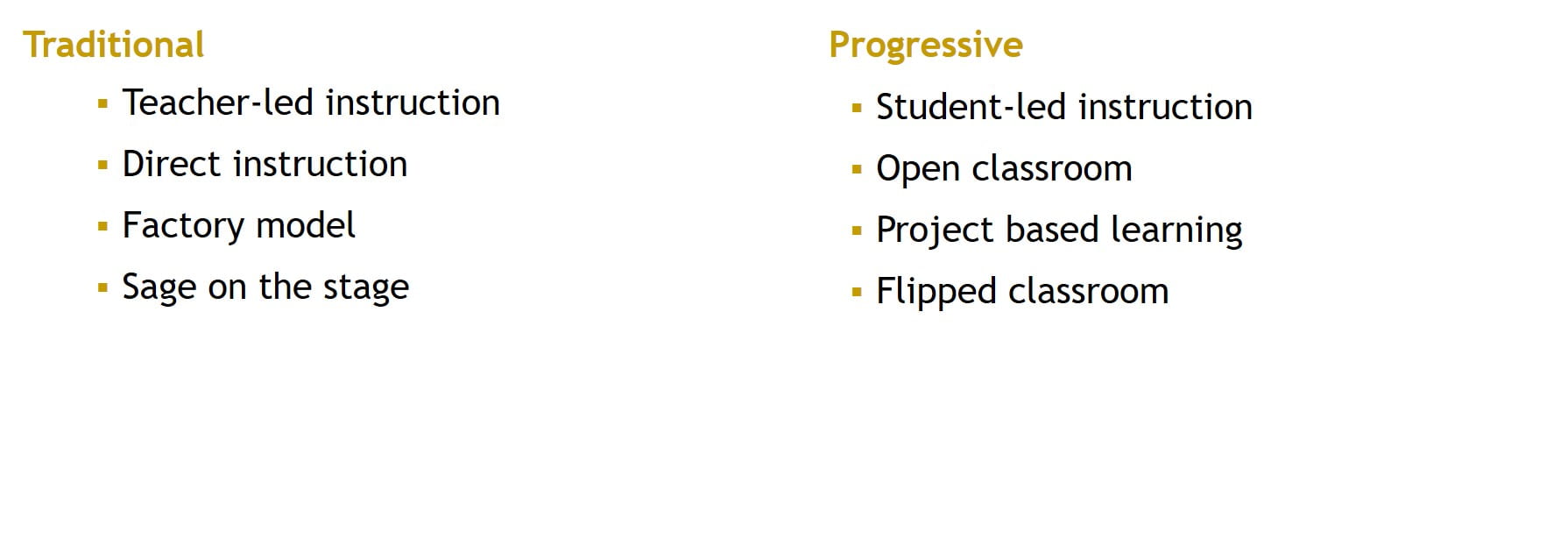
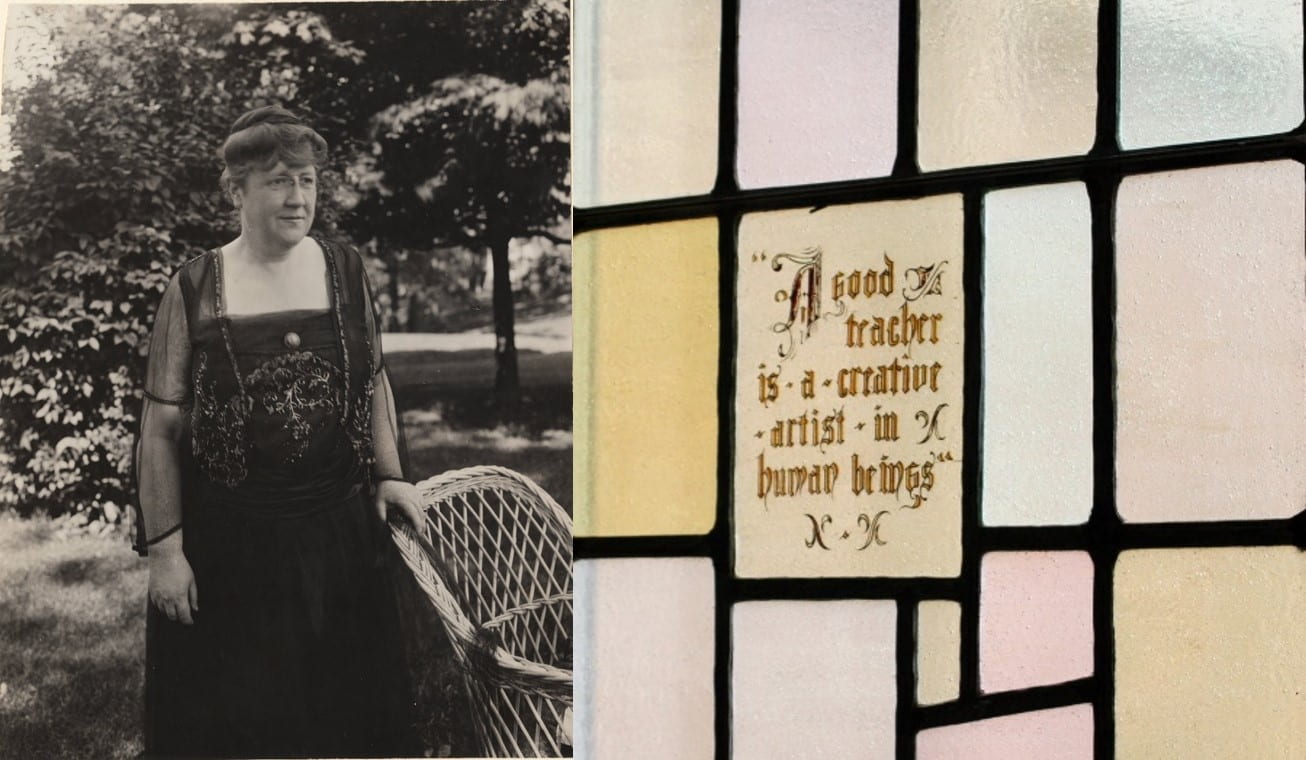
In 1941, the elementary school that had been on campus almost since the very start of Towson’s existence, was re-named the Lida Lee Tall School.
Lida Lee Tall served as Principal of the Maryland State Normal School and President of the State Teachers College at Towson from 1920 until 1938.
During her time at Towson, Tall worked to make the experience of attending MSNS a full one for students. A Student Government Association was started, as was the student run newspaper. Students were invited to have tea with Tall and her staff, and field trips were taken to New York so students who had never been outside their hometowns could experience travel and culture.
She emphasized that the work the Normal School students did – the ones learning to be teachers — must “revolve” around the work done at the campus elementary school. She is quoted as having said that “A Normal School revolved around its library and its laboratory, which is an elementary practice school.”
Tall also put into place a virtual “one room” schoolhouse – she created one class that would mimic the various ages and learning styles one would find as a teacher in a small rural school, something akin to what one would find in a Montessori school.
So Tall was actually a very progressive school leader. She believed that it was best to educate the whole child, that children learned by doing, and that the role of teachers was to create a setting for students to learn through exploration.
It’s very fitting that the elementary school eventually bore her name.

So this is what progressive education looks like in practice.
In 1929, the 7th grade class crafted this magazine. In it, they talked about what was happening in the school and invited writers from every class to contribute.
One of the reports, shown here was an update about the school’s Glider Club, a club in which elementary school children were literally building a glider that they would then presumably fly.
The magazine includes a picture so that we can see that indeed it is a full-sized glider, being kept in someone’s barn.
These class publications show up throughout the years of LLT’s existence and in each, there is clear evidence of children-led project learning.
As for the rest of America, after WWII, emphasis was placed on standardization and data in education. Progressive education fell out of fashion. It was seen to be too permissive and there was concern that children weren’t actually learning what a nation, rebounding from war, needed them to know.
This brief timeline created by the National Education Association shows the growth of standardizing testing in the country:
- WWI: Army Mental Tests used to determine ability of drafted men
- 1926: Scholastic Aptitude Test (SAT) in place
- 1929: Iowa becomes first state to institute high school achievement testing – other states soon use this model, too
- 1958: Iowa tests now scored by computer
- 1965: Elementary and Secondary Education Act means more states using tests as measurement of student achievement
By the 1960s achievement tests were being constructed by the US government to measure just how well students were performing.
How did this affect the work done at Lida Lee Tall?
Well, the long and the short of it is, it didn’t change the work, but it changed the perception of how the work would be explained to parents and other people not in the educational field.
In 1958, LLT Principal Genevieve Heagney, sent out a draft of the school’s curriculum to faculty at the State Teacher’s College at Towson. While the Social Studies professor was head over heels about the work that was being done, the Education faculty were a bit more cautious. They warned her that many lay-folk would not understand the point of the curriculum and that she’d have to find ways to explain it to them.
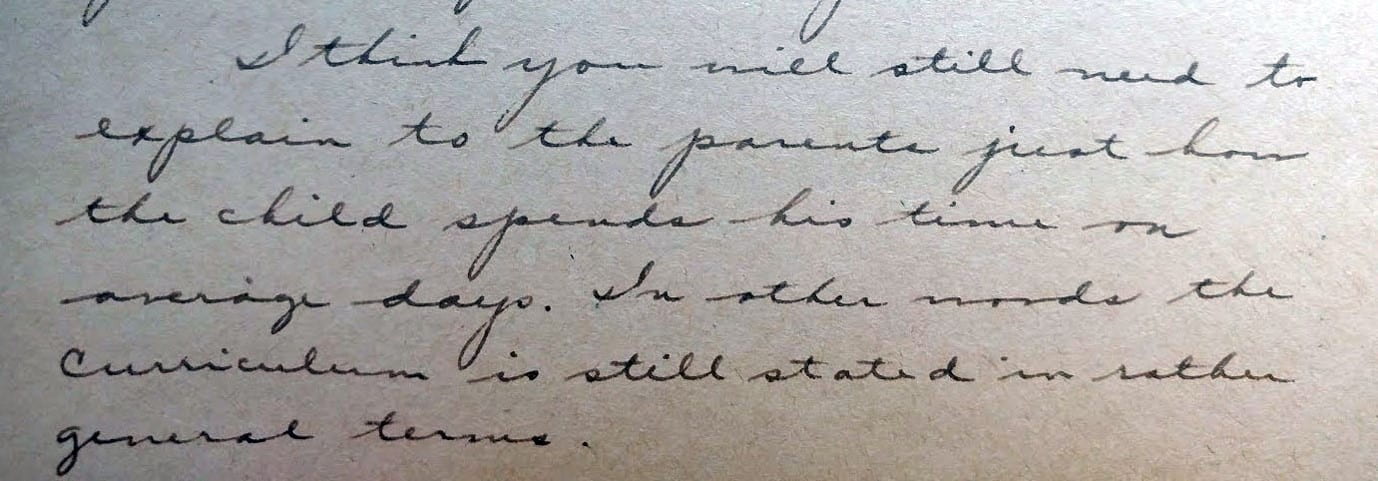
We have many examples of progressive education practices in action at Lida Lee Tall.
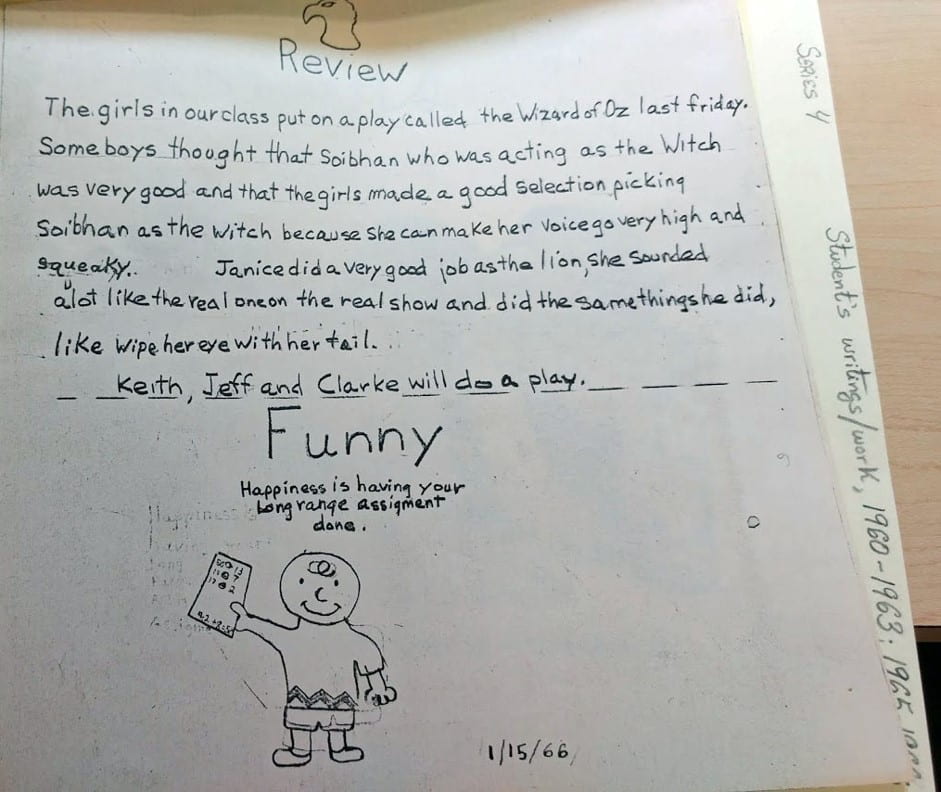
This photo from 1966 shows a review of a play produced by the girls in a class as written by the boys. The bottom cartoon shows Charlie Brown saying that “Happiness is having your long range assignment done.” This piece shows some hallmarks of progressive education at work: student produced work, critical analysis by peers, and project-based learning. Students were still active participants in their learning experience.
What I think was most interesting is that as progressive education began taking a backseat to traditional education, we still had student teachers who were exposed to this most idyllic of teaching experiences – students engaged in their own learning. How formative was the experience not just for the elementary students, but also for the student teachers who worked or observed in the school?
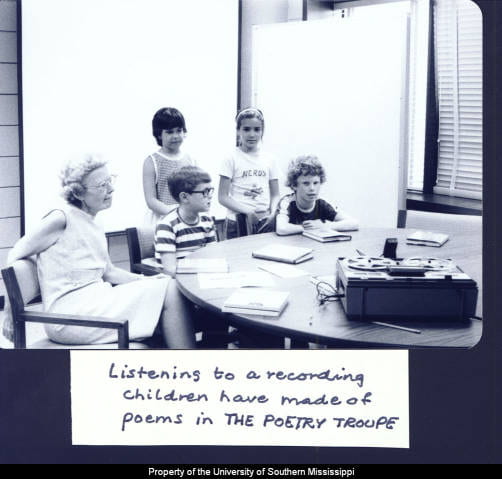
In 1977, long-time LLT librarian, Isabel Wilner, published an anthology of poems for children called The Poetry Troupe.
The work done to publish this book is a perfect example of what progressive education looked like in the modern era.
In an article in the Baltimore Sun, Wilner explained:
“One day, I was in a hurry to find a couple of poems for children to read to a college class,” Miss Wilner recalled. “So I asked the children to help me search around and find some.
“And then it occurred to me that we should keep the children’s favorite poems together.” It was a matter of having them in one book, just like having well-honed tools, ready to do any job that comes up, Miss Wilner remarked.
Having the children work together to find exciting poems spurred their reading abilities as well as their engagement. In the article, Miss Wilner is also quoted as saying “Look, we have children reciting dirges and lingual gyrations despite the fact that their teachers never thought they were near the reading level.”
These days, it feels like there isn’t much left of progressive education in mainstream public schools, even though there are many independent and charter schools that have taken up the torch for non-traditional schooling.
However, last year Garrett Heights Elementary Middle School in the Hamilton neighborhood of Baltimore City became the first non-charter public school program to begin a Montessori program in the city.
